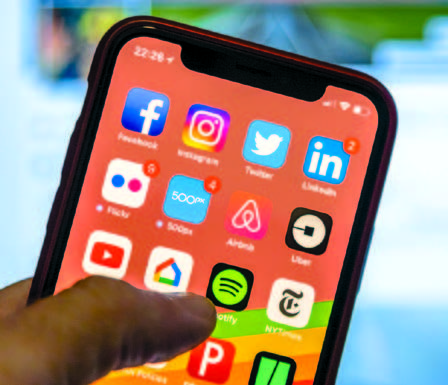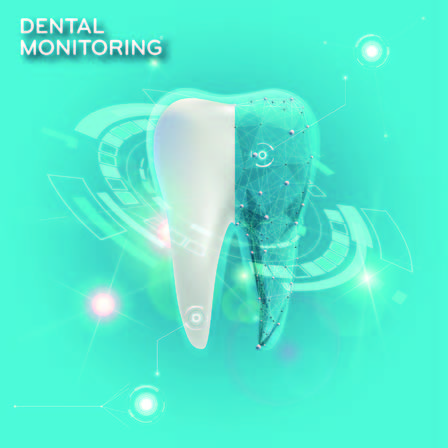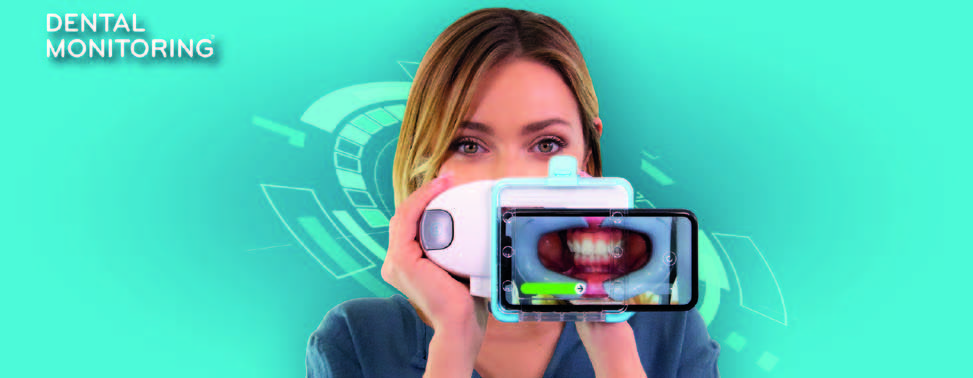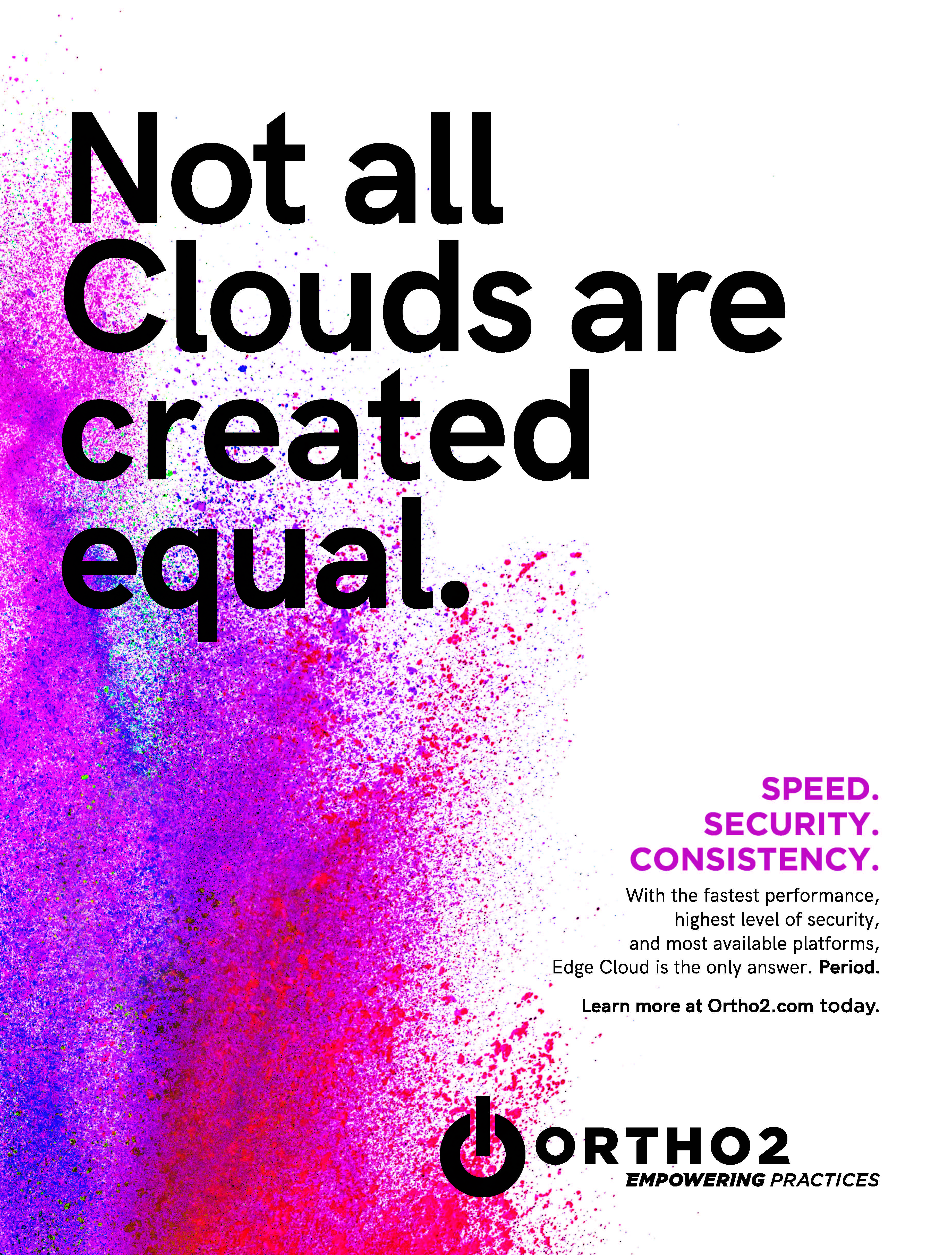MANAGEMENT & MARKETING
Adapt or Perish: New Digital Communication Technology Helps Disrupt the Disrupters of the Orthodontic Industry
I’m going to drop some truth on you right from the start. You might have a solid, traditional marketing program that brings in patients, but it is not going to be enough. The long game isn’t in your favor, because new technologies are emerging all the time to eat away at your business as your clientele gets younger and more technologically savvy, demanding convenient services and almost entirely digital communication.
To quote the great philosopher Yogi Berra, the future ain’t what it used to be. The orthodontic industry has changed, and there’s no going back. Conventional private, fee-for-service practices are finding it harder to compete for a smaller slice of the same pie. Direct-to-consumer (DTC) clear aligner treatment options are commoditizing our business, causing downward pressure on fees and automating services to the point where a segment of orthodontics is as transactional as an Uber* ride.
You can hope things return to the way they used to be, or you can embrace the change and make a few adjustments to your practice that will help you thrive in today’s new economy.
How Did We Get Here?
Technology has disrupted virtually every industry. Airbnb** has given travelers more choices of where to stay when visiting a new city, Spotify*** has turned streaming into an essential application for music lovers of all ages, and Netflix† has helped topple Blockbuster Video‡ and is now threatening the traditional movie complex. While the orthodontic industry became more and more complacent and set in its ways, we took patients for granted, counting on the traditional business model to hold up forever. A gap has now opened between what is important to our patients and what is important to us. It was only a matter of time before technology and innovation also threatened the way orthodontists do business.
Similar articles from the archive:
- MANAGEMENT & MARKETING The Future Is Now: How Millennials, Tech, and a Chess-Playing Computer Are Changing Orthodontics October 2017
- Teledentistry, Do-It-Yourself Orthodontics, and Remote Treatment Monitoring December 2016
- MANAGEMENT & MARKETING Orthodontic Marketing Through Social Networking May 2013
As you are well aware, DTC companies that have popped up within the past few years can provide patients with aligners through the mail, requiring little to no interaction with an orthodontist. In hindsight, with the development of clear aligner technology and streamlining of production, we should have seen this coming. It reduces time commitments for patients and their parents and, certainly, lowers their costs. But patients are generally unaware of the true value an orthodontist offers during treatment, even when it’s only to fix the social six. These alternative routes to orthodontic treatment have emerged because patients demand more than they used to.
Can a high-quality practice cut through all this noise to communicate that it’s worth more than the lower-cost alternatives while offering the convenience of fewer visits and enhanced communication? The answer is a resounding “yes.” With the right combination of targeted Internet marketing, digital communication, and enhanced technology, we can capitalize on the awareness that DTC companies are gifting us. In short, we can take advantage of the demand they are building to capture more market share than was available to us before they came along.

Tech Offers Opportunity
Let’s talk about the golden opportunity awaiting us. The same technology that creates new competitors can help us beat them at their own game. Currently available products and services can augment your in-office personal exam and consultation while providing the benefits of direct communication, the convenience of fewer office visits, and even the lower fees promised by the DTC companies.
Picture the typical Millennial parents. They are “digital natives,” meaning they were raised with technology at their fingertips, so they are much more likely to adopt a new service that promises time-saving convenience. They have phone apps that enable everything from ordering food brought by Uber to binge-watching their favorite shows on the commute to work. Most important, they communicate online. They engage with politicians on Twitter†† and chat with customer service representatives on the web. Before they call a service person, they look up the problem on YouTube‡‡ to see if they can fix it themselves. And Millennials are not the only ones: earlier and later generations are adapting to this all-digital way of life. It’s too easy and convenient not to.
No wonder consumers are enticed by DTC companies that spend more than $300 million per year on advertising, all to sway consumer opinions and educate the public about how easy it is to get a better smile through mail-order orthodontics. But it’s not as daunting as it seems. In the 1970s science-fiction TV show The Six Million Dollar Man, when an astronaut was seriously injured in a fiery crash, the government used advanced technology to rebuild him, making him better, stronger, and faster. That’s what you can do with your practice. You have the tools at your disposal right now to compete with DTC aligner companies. You don’t need a multimillion-dollar budget. You just need to compete on your own turf by offering services that align with the consumer mindset. Essentially, you need to equip your practice with the technology to give patients and parents what they want, and then communicate the message that a highly trained, experienced, trusted local orthodontist will take care of them all along the way.

Current technology offers a secure communication channel—compliant with the Health Insurance Portability and Accountability Act (HIPAA)—for prospective patients who wouldn’t pick up the phone to call an orthodontist but might be engaged through text messaging. One such service is Rhinogram,§ which allows you to have a conversation about treatment with a new or existing patient through encrypted messaging. You can share photos and route messages to your team members to get questions answered, building trust in your practice and the services you provide before patients step through your door. This regular text messaging can be integrated with Facebook Messenger,§§ so that you can engage with people on social media.
You can reach potential patients through targeted social media advertising campaigns as well. When they click on your ad, they are instantly put in touch with you, 24 hours a day. As soon as you’re ready, you can pick up a message sent by an interested person and begin a conversation. The service also permits multimedia uploading of PDFs or image files, including selfies sent by text message so you can take a quick look at the person’s face and teeth. Patients can send photos of their insurance cards to prequalify them for treatment, all before the initial visit. This saves time for everyone involved.
Once a patient is ready to begin treatment, there are other services that allow you to continue with digital messaging. Dental Monitoring§§§ has the technology and artificial intelligence-enabled software to provide virtual follow-up by smartphone. When you hand a patient four or five sets of aligners to change out every few weeks, there is a good chance that compliance will be less than perfect. In the past, you might have had to wait eight weeks or so to find out that a patient had gone off track. With an information technology solution like Dental Monitoring, you can check progress weekly using intraoral pictures taken by smartphone. If you spot a problem, you send a message or call the patient in for a quick office visit, thus averting a bigger problem weeks down the road.
These communication tools enable a stronger personal connection with patients—personal communication enhanced through digital means. We talk with them more often and consult on their progress at shorter intervals, keeping the doctor-
patient relationship and orthodontic treatment humming along smoothly. By reducing the number of times you need to see a patient in-office, you also lower your overhead, permitting a reduction in fees while still increasing profitability at a lower price point. What’s more, you’re now speaking the consumer’s language. Your office has crossed the threshold from a traditional to a digital-first practice.


Disrupt the Disruptors
Although more patients will come in with preconceived notions of what they want when they are acquired through these digital channels, as orthodontists, we are still the most qualified to evaluate their needs. Digital technology is not intended to replace the all-important in-office clinical exam, records, and personal consultation. Patients might actually opt for more complex treatment once the choices are presented and explained to them. If a patient still chooses to go with a limited treatment option, even after a comprehensive consultation with recommendations, then we should offer that service without judgment. We are not abdicating our responsibility to the patient—we are still evaluating and assessing the situation based on our training and experience.
Keep in mind that a huge segment of the market will not consider going to an orthodontist because they think treatment is too inconvenient or costly. Orthodontists must embrace the reality that some adult patients just want straighter teeth. We can capture the limited-treatment cases by advertising that we offer the same advanced technology as the DTC companies, with a higher level of hands-on care. These companies are painting orthodontists with a broad brush as expensive and unnecessary, and by standing idle, we have allowed them to do it. One thing DTC marketing has made clear, however, is that there are millions of patients out there who want orthodontic treatment, but just aren’t seeking it out. Advanced digital communication systems, combined with such savvy digital marketing strategies as educational advertising on social media and online reputation management, improve our ability to take back our reputations and a greater share of the marketplace.
As it stands right now, we aren’t getting the opportunity to speak with these potential patients because they are bypassing us completely. Digital communication channels offer an entry point for patients and an opportunity to strip away the advantages offered by DTC companies in terms of convenience and price. By disrupting the disruptors, we create an immense opportunity for growth.
FOOTNOTES
- *Registered trademark of Uber Technologies, Inc., San Francisco, CA; www.uber.com.
- **Registered trademark of Airbnb, Inc., San Francisco, CA; www.airbnb.com.
- ***Registered trademark of Spotify USA Inc., New York, NY; www.spotify.com.
- †Registered trademark of Netflix, Inc., Los Gatos, CA; www.netflix.com.
- ‡Registered trademark of DISH Network LLC, Englewood, CO; www.dish.com.
- ††Registered trademark of Twitter, Inc., San Francisco, CA; www.twitter.com.
- ‡‡Registered trademark of Google Inc., Mountain View, CA; www.google.com.
- §Registered trademark of Rhinogram, LLC, Chattanooga, TN; www.rhinogram.com.
- §§Registered trademark of Facebook, Inc., Menlo Park, CA; www.facebook.com.
- §§§Registered trademark of Dental Monitoring SAS, Paris, France; www.dental-monitoring.com.





COMMENTS
.